The Wood Welded Companies use a system of joining blocks together which includes the use of Tite Joint Fasteners. This system provides a high quality system for connecting two butcher blocks while being completely hidden once the block is installed. The following sequence shows installation procedures.
Joining Two or More Blocks
Step 1 - Gather Your Parts and Equipment
This installation guide is for tops which have been predrilled for Tite Joint Fasteners. Please be advised that the fasteners we use currently are from Knape and Vogt. Gather the parts included in your hardware package. Check to see that you have complete sets of everything. There should be 2 round end caps for each pin. Be sure to check through all your packaging prior to discarding it. Often the fasteners are attached to the top but they may have come loose in transit.
The straight rod shown in the picture above is an optional piece of equipment. Any thin metal rod such as a finish nail will do in tightening the nut.
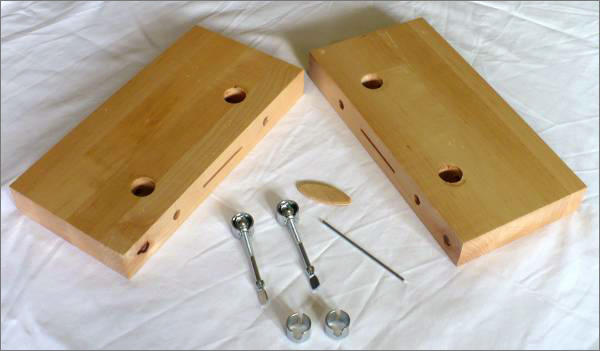
Step 2 - Align the Butcher Blocks
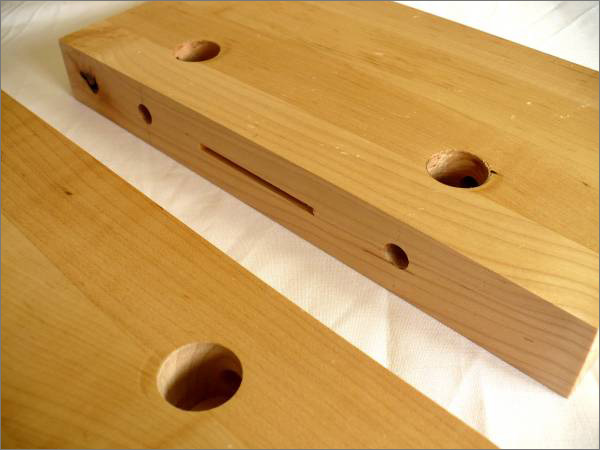
For the purposes of showing this installation we have the tops upside down. You may have to work from the bottom side. You should align the tops so that the 3/4″ holes are close to each other. This dry fitting procedure is to insure you have the blocks in the proper configuration and that the holes are drilled in the proper place.
Step 3 - Inserting the Biscuits
The biscuits provided are to help in the alignment of the two tops. Insert the biscuits into the groves in the edge of one of the blocks. This will reduce the chances the tops are out of alignment top to bottom. In other words, when the installation is complete you should feel almost no ridge line on the top surface as you run your hand over the joint.
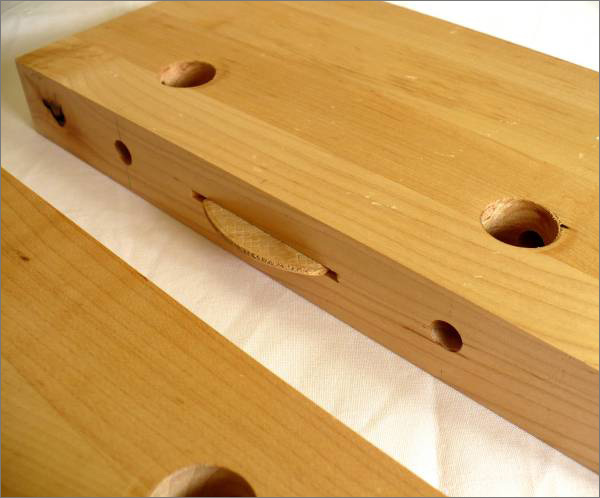
This picture is to help you visualize how the Tite Joint Fastener works. As you can see there is a cap on both ends of the “through bolt”.
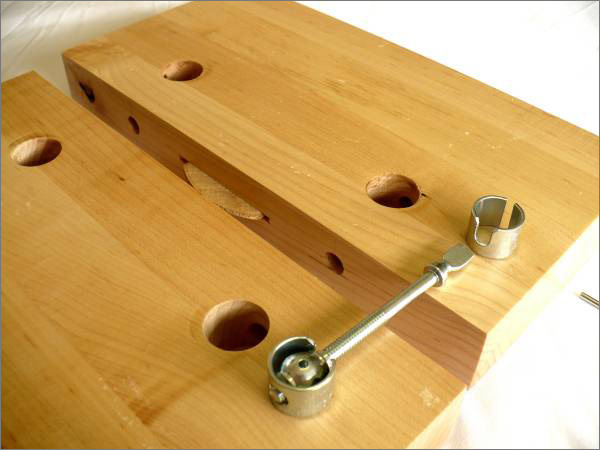
The “through bolts” will have approximately this orientation.
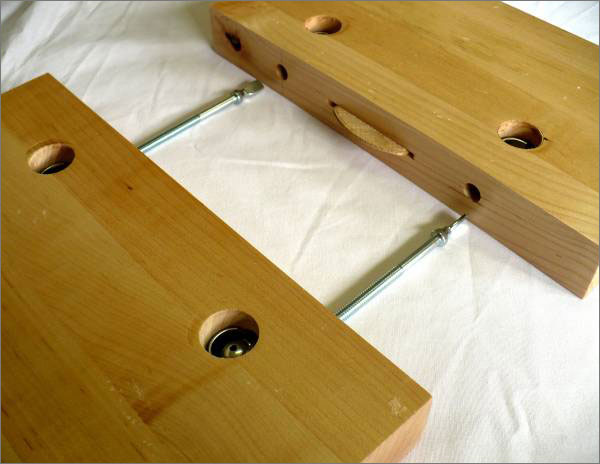
Step 4 - The End Cap Nut

Find the end cap “nut” with the tightening ball in it. Place it in the hole in the bottom face of the block. Insert the threaded end of the through bolt into the small hole in the edge of the block. The threaded hole in the nut should align with the threaded end of the through bolt. Thread the bolt into the hole of the end cap and tighten just enough to hold the assembly loosely together.
Step 5 - Bringing the Blocks Together
Repeat this for all the fastening locations along this seam.Once all the nuts and through bolts are in place the Butcher Block tops can be nudged together until the “flange” end of the through bolt is inserted into the hole in the edge of other top.
The blocks should be nudged together until the flange end projects into the 3/4″ hole of the second block. The flange should be completely visible in this second hole. When you look at the flange it should have its edge showing. The is important to make inserting the second end nut easier. The flat section of the through bolt will act as the “catch” allowing the blocks to be drawn tightly together.
Please note that the second set of end caps are shown sitting on the block. They are actually upside down. They will need to be flipped up into the hole as you will see in the next step.
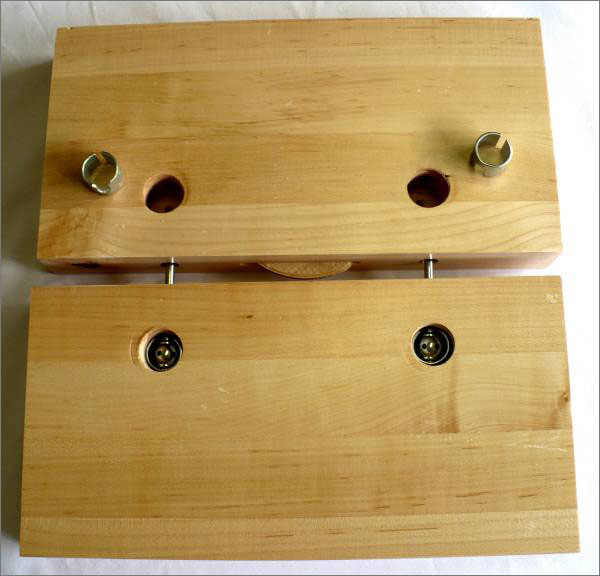
Step 6 - Inserting the Second End Cap
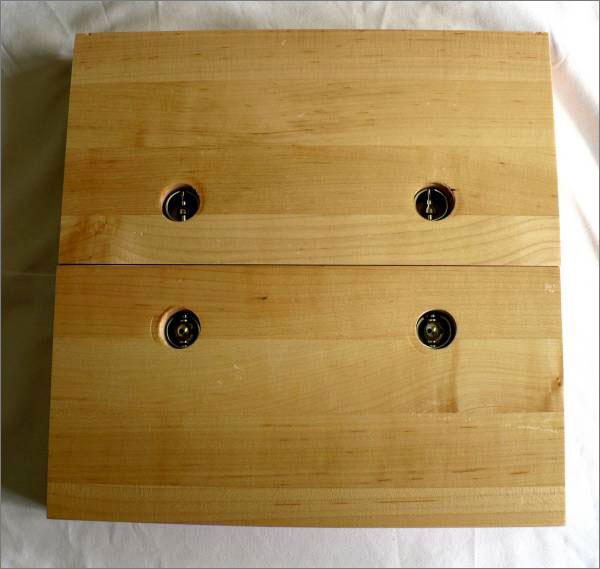
This picture shows the second end cap installed. To do this find the “U” shaped opening in the cap. This “U” shaped opening will slide over the through bolt essentially “trapping” the flange inside it. The U shaped opening should be inserted so that it is towards the edge of the block. The opposite side of the end cap is a slot. The flat portion of the through bolt should slide into this slot. This will prevent the twisting of through bolt as you tighten the nut.
Step 7 - The Blocks Come Together
Now you can use the rod provided (or any thin metal rod such as a finish nail) to tighten the ball nut. As you tighten this nut the tops will be drawn together. As the blocks begin to snug up they should be checked for alignment both up and down and side to side. Any adjustment to the position of one block relative to the other block should be made at this time. Tighten down the nut until the blocks come fully together and do not slip when firm pressure is applied to them.
The tops now can be attached to the base unit(s).
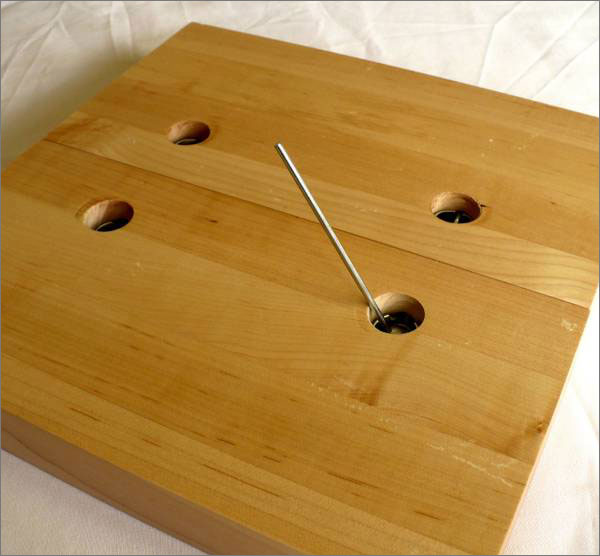
The Finished Result
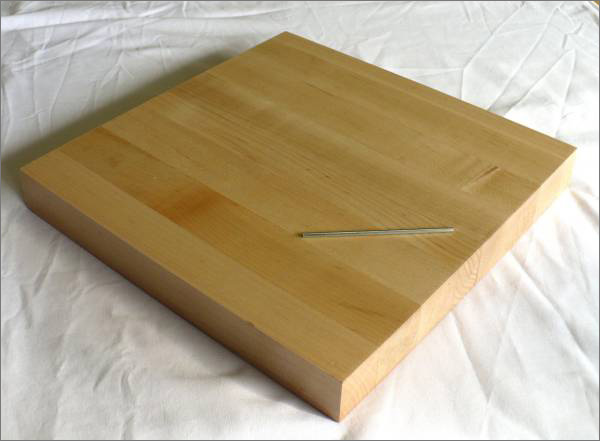
This is the way the seam should look on the top side of the block. If the alignment is off you can loosen the nut on the bottom side and make adjustments.We have been asked if silicone can be used on the edges prior tightening the blocks up. The answer is yes. While it is it is NOT necessary putting a bead of flexible clear silicone will not hurt the block.
As a final note it should be said that this system has been flawless in its performance. It provide a tight fit and yet allows for slight movement of the wood as the environment around the butcher block tops changes. This is important because wood is hygro-scopic and will gain and loose moisture in lock step with its surroundings. Gaining moisture swells the block slightly, loosing moisture shrinks it. This is natural and having a tight, but not to tight seam allows for this movement.
We do not recommend that blocks with the grain running in different directions be glued together. Gluing blocks together which have the same exact grain direction may, in some cases, be acceptable.
